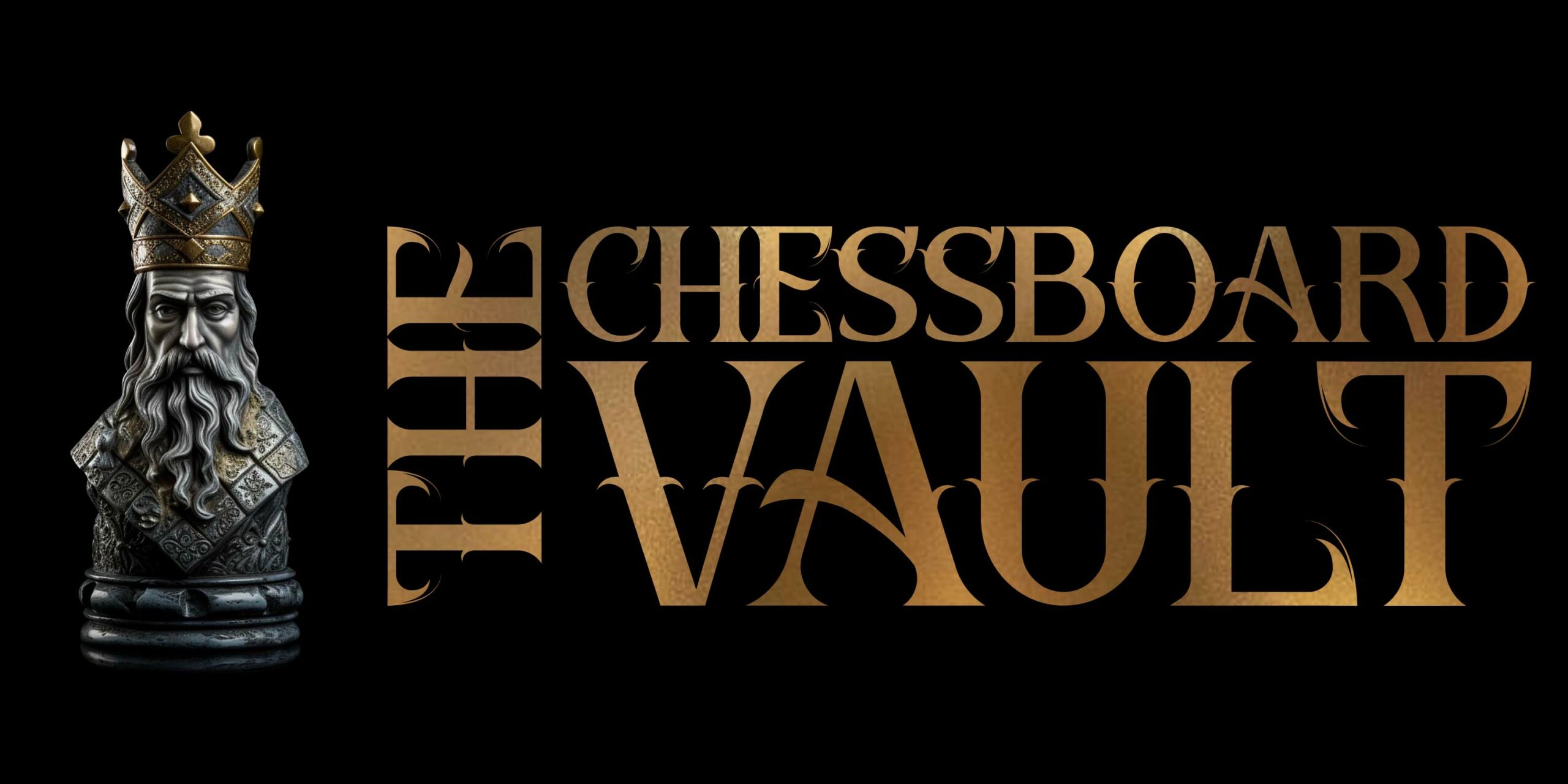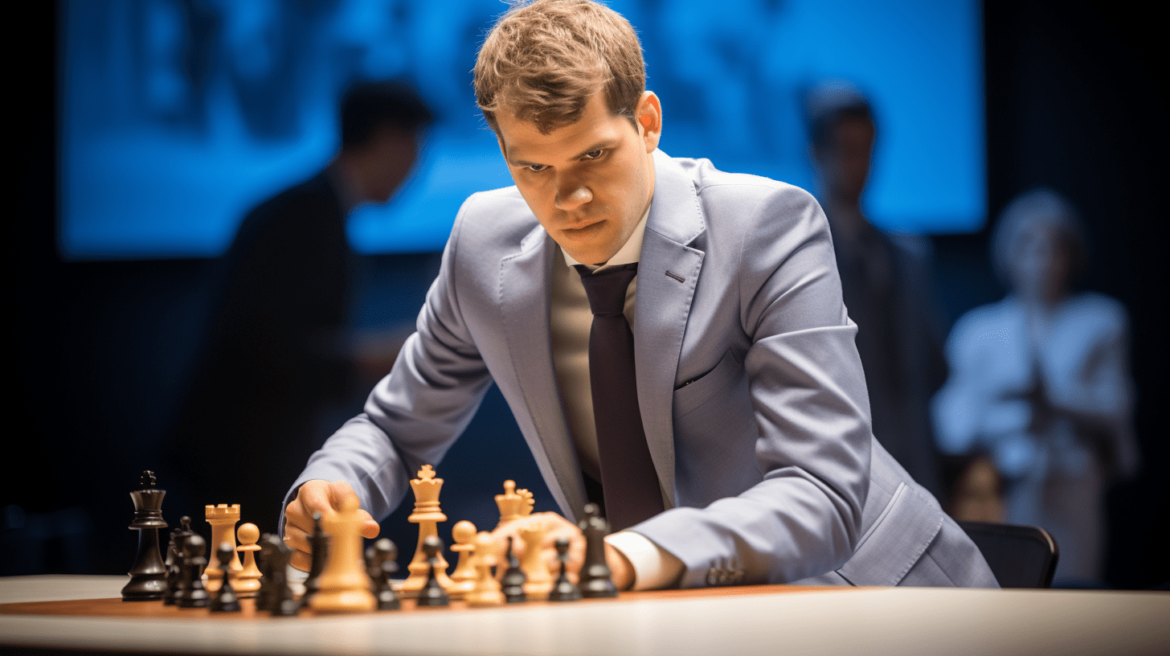In the annals of chess history, certain names resonate with a profound sense of mastery, innovation, and genius. Fischer, Kasparov, and Capablanca have all left indelible marks on the game, each redefining the boundaries of chess understanding in their own unique ways. Yet, the current era is dominated by a Norwegian prodigy who has not only conquered the highest echelons of competitive chess but has done so with a flair and dynamism rarely seen before: Magnus Carlsen. What are the best Magnus Carlsen games?
From the moment Carlsen emerged on the global stage, it was evident that the chess world was witnessing the rise of a player whose talent defied convention. Born in 1990 in Tønsberg, Norway, Carlsen’s ascendancy was meteoric. By the age of 13, he was already a Grandmaster—a title he earned with games that displayed maturity beyond his years. What sets Carlsen apart is not just his formidable understanding of the game’s intricacies but his fearless and intuitive approach to battles on the 64 squares.
Diving into Carlsen’s best games is akin to exploring a treasure trove of chess artistry. His games shimmer with tactical brilliance, deep strategic insight, and an uncanny ability to steer positions into channels where he feels most comfortable, even if they are unknown territories for most. He has a remarkable aptitude for squeezing victories out of seemingly innocuous positions, a testament to his profound endgame skills and relentless determination.
To study Carlsen’s games is not just to understand modern chess better but also to appreciate the mind of a genius at work. As we embark on this journey through some of his finest masterpieces, prepare to be enthralled by the magic that Magnus Carlsen brings to the chessboard—a blend of precision, creativity, and sheer audacity that has solidified his place among the pantheon of chess legends.
Magnus Carlsen vs. Veselin Topalov, Nanjing 2009
The duel between Magnus Carlsen and Veselin Topalov during the 2009 Nanjing Pearl Spring tournament is an exemplary showcase of Carlsen’s deep positional understanding. In this encounter, Carlsen, wielding the white pieces, squared off against Topalov’s Nimzo-Indian Defense.
Carlsen’s handling of the early middlegame was commendable, but it was in the late middlegame where he truly demonstrated his genius. With both kings castled on the queenside, Carlsen managed to create and exploit weaknesses in Black’s pawn structure.
A significant moment arrived when Carlsen played the inspired 21. g4!, a move which initiated a pawn advance on the kingside. This ambitious advance was not merely about gaining space, but it aimed to pry open lines against the black king, putting Topalov under tremendous pressure.
After some exchanges, Carlsen’s powerful bishop pair dominated the board, aiming menacingly at Black’s king and weaknesses. Despite Topalov’s best efforts to complicate matters, Carlsen smoothly converted his positional advantage into a tangible material gain.
Towards the end, facing an inevitable defeat, Topalov made a last-ditch effort by sacrificing his knight. However, Carlsen coolly navigated the ensuing complications, eventually forcing Topalov’s resignation.
This game was a testament to Carlsen’s multi-faceted talent: his ability to recognize key moments, make positional decisions, and execute them with precise tactics. The move 21. g4! stands out not only because of its audacity but also its effectiveness in the grand scheme of the game, highlighting Carlsen’s unique blend of creativity and accuracy. Is this one of the best Magnus Carlsen games?
Magnus Carlsen vs. Levon Aronian, Wijk aan Zee 2015
The match between Magnus Carlsen and Levon Aronian at the 2015 Tata Steel Chess Tournament in Wijk aan Zee is frequently cited as a demonstration of Carlsen’s deep strategic understanding and exceptional ability to handle complex positions.
The game sprang to life with Carlsen’s offbeat choice in the opening, resulting in an unconventional pawn structure. As the middlegame unfurled, the players engaged in intricate maneuvers, with Carlsen aiming to prove the superiority of his pawn majority on the queenside.
One of the game’s defining moments was Carlsen’s 19. Nh2!. This subtle knight retreat, which might appear unassuming at first glance, was a masterclass in prophylaxis. It preemptively defended the f3 pawn, allowing his other pieces tremendous flexibility and freeing his queen to undertake active operations.
But it was 27… Nc4! where Carlsen, now with the black pieces after some exchanges, showcased his ability to seize the initiative. This knight move, targeting Aronian’s b2-pawn, was a pivot turning the game in Carlsen’s favor. Despite the material equality, Carlsen’s active pieces and the looming threats were too much for Aronian to handle.
In the subsequent play, Aronian’s position became increasingly difficult. His attempts at generating counterplay fell short against Carlsen’s precise responses. As the endgame approached, Carlsen’s activity and superior pawn structure became the decisive factors.
Eventually, Aronian succumbed to the pressure, making a fatal error that allowed Carlsen to convert his advantage smoothly. This victory was emblematic of Carlsen’s play: patient, strategically profound, and tactically sharp. The moves 19. Nh2! and 27… Nc4! stood out, showcasing the World Champion’s ability to identify the critical moments in a game and respond with unparalleled precision. Surely one of the best game in our list of best Magnus Carlsen games.
Sergey Karjakin vs. Magnus Carlsen, World Chess Championship 2016, Game 10
The 2016 World Chess Championship in New York was a battle of nerves and wits. In Game 10, Magnus Carlsen, the defending champion, faced a pressing need to equalize the score against his challenger, Sergey Karjakin.
Karjakin, playing white, steered the game into the realms of the Spanish Opening. Carlsen, known for his deep preparation and ability to create complex positions, sought imbalances early on. The middlegame was characterized by intricate maneuvering, with both players vying for the initiative. Yet, it was Carlsen’s creative prowess that would shine through.
A defining moment in the game was Carlsen’s 37… h5!. This seemingly simple pawn move was, in fact, a deep strategic decision. Carlsen’s idea was to open lines on the kingside, challenging Karjakin’s defensive capabilities and potentially exposing the white king to threats. This move significantly altered the dynamics of the position, placing the onus on Karjakin to find accurate defensive moves.
As the game progressed, the tension intensified. Karjakin, faced with the mounting threats orchestrated by Carlsen, found it challenging to maintain his defensive posture. A few inaccuracies later, Carlsen managed to penetrate Karjakin’s defenses, ultimately leading to a crucial win for the reigning champion. One of the best game in our list of best Magnus Carlsen games!
The victory in Game 10 was pivotal for Carlsen. It not only leveled the score but also provided a much-needed momentum boost. The match eventually led to tiebreakers where Carlsen’s prowess in rapid play shone, allowing him to retain his title. Among the many moves played, 37… h5! stands out as a brilliant demonstration of Carlsen’s deep understanding and his ability to seize the initiative when it matters most.
Magnus Carlsen vs. Viswanathan Anand, World Chess Championship 2014, Game 6
The World Chess Championship 2014 held in Sochi, Russia, featured reigning champion Magnus Carlsen and challenger Viswanathan Anand, a veteran and former World Champion. By Game 6, the chess world was keenly observing the duo’s strategic battles, each having claimed one win in the previous games.
The game commenced with the Sicilian Defense, a double-edged choice that immediately signaled intentions for a combative game. Both players navigated the opening intricacies, with Carlsen opting for a line that avoided the most theoretical paths. The middle game saw both players maneuvering, attempting to outplay the other in a balanced position.
However, the game’s pivotal moment arose when Carlsen played the cunning move 26. Kd2!. At first glance, this king move might seem modest. Yet, it was a profound strategic decision, aiming to improve the king’s position and allowing the rooks to contest open files. The subtlety of this move is representative of Carlsen’s unique style, emphasizing the importance of piece activity and harmony.
Anand faced difficulties responding to Carlsen’s deep strategic plans. Gradually, Carlsen’s active pieces began to exert pressure, and slight inaccuracies from Anand gave the Norwegian an edge. Heading into the endgame, Carlsen’s rooks dominated the board, and his distant passed pawn became a significant threat.
Despite Anand’s best defensive efforts, Carlsen’s persistence and precision prevailed. The game concluded in Carlsen’s favor, giving him a lead that he would not relinquish for the remainder of the match.
The entire encounter was a testament to Carlsen’s deep positional understanding and tenacity, with 26. Kd2! underlining his exceptional ability to find strong moves in seemingly quiet positions. Now what is the last game of our list of best Magnus Carlsen games?
Magnus Carlsen vs. Fabiano Caruana, Sinquefield Cup 2014
In 2014, the Sinquefield Cup saw some of the world’s elite grandmasters battle it out, with Magnus Carlsen and Fabiano Caruana being two of the major attractions. By the time they squared off in Game 6, Caruana had been on a phenomenal winning streak, boasting a perfect score in the first five rounds. The chess community was eagerly anticipating this clash.
Carlsen, with the white pieces, initiated the game with 1.e4, leading to a Ruy-Lopez, Closed variation. Caruana, well-prepared as always, confidently responded, setting the stage for a rich, strategic battle. As the game developed, both players sought the slightest inaccuracies in each other’s positions.
However, the turning point of the game was Carlsen’s 35. Bxh6!. This exchange sacrifice, breaking through on the kingside, highlighted Carlsen’s deep tactical insight and willingness to take calculated risks. By eliminating Caruana’s pawn, Carlsen aimed to expose the black king to potential threats while leveraging the strength of his passed pawn on the d-file.
Caruana, under mounting pressure, tried to stave off Carlsen’s threats. But the Norwegian’s relentless pursuit, combined with precise technique, gradually increased his advantage. Carlsen’s active pieces, especially his rooks, began infiltrating Caruana’s position, creating insurmountable challenges for the American grandmaster.
In the end, Caruana’s defenses crumbled, marking the end of his winning streak in the tournament. This victory by Carlsen was not just a testament to his exceptional tactical prowess but also showcased his ability to halt the momentum of a red-hot opponent. The audacious 35. Bxh6! will forever be etched in the memories of those who witnessed the game, symbolizing Carlsen’s unparalleled chess intuition. The last game of our list of best Magnus Carlsen games.

